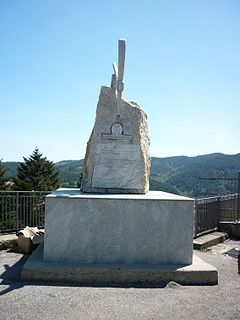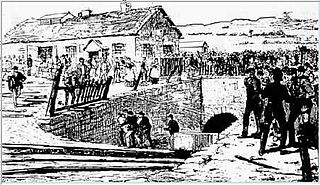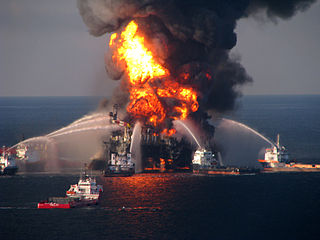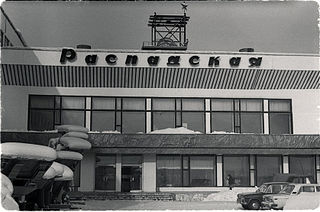A mining accident is an accident that occurs during the process of mining minerals. Thousands of miners die from mining accidents each year, especially from underground coal mining, although hard rock mining is not immune from accidents. Coal mining is considered much more hazardous than hard rock mining due to flat-lying rock strata, generally incompetent rock, the presence of methane gas, and coal dust. Most of the deaths these days occur in developing countries, and rural parts of developed countries.

The Nanaimo mine explosion on May 3, 1887, in Nanaimo, British Columbia killed 150 miners. Only seven miners survived and the mine burned for one full day.
Benxihu (Honkeiko) Colliery, located in Benxi, Liaoning, China, was first mined in 1905. It started as an iron and coal mining project under joint Japanese and Chinese control. As time passed, the project came more and more under Japanese control. In the early 1930s, Japan invaded the north east of China and Liaoning province became part of the Japanese controlled puppet state of Manchukuo. During the Second Sino-Japanese War, the Japanese forced the Chinese—some of whom had been captured from local military organizations—to work the colliery under very poor conditions. Food was scarce and workers did not have sufficient clothing. Working conditions were harsh and diseases such as typhoid and cholera flourished. Typically miners worked 12-hour shifts or longer. The Japanese controllers were known to beat workers with pick handles and the perimeter of the mine was fenced and guarded. Many describe the work as slave labour.

The Monongah mining disaster of Monongah, West Virginia, occurred on December 6, 1907, and has been described as "the worst mining disaster in American History". The explosion occurred in Fairmont Coal Company’s No. 6 and No. 8 mines.

The Ulyanovskaya Mine disaster was caused by a methane explosion that occurred on March 19, 2007 in the Ulyanovskaya longwall coal mine in the Kemerovo Oblast. At least 108 people were reported to have been killed by the blast, which occurred at a depth of about 270 meters (885 feet) at 10:19 local time. The mine disaster was Russia's deadliest in more than a decade.

Parc Slip Colliery was a coal mine near situated at Aberkenfig, near Tondu in Bridgend County Borough, Wales.

The Shanxi mine blast was a pre-dawn explosion that occurred in a mine in Gujiao city near Taiyuan, the capital of Shanxi province of China on 21 February 2009. Four hundred and thirty six were in the mine at the time of the explosion. According to the state-run Xinhua News Agency, rescue efforts concluded at 6 p.m. (CST), February 22 with all trapped miners located; the death toll was 74, with 114 in the hospital and five in critical condition. Many of the injured are being treated for carbon monoxide poisoning. The death toll indicates that this is the most lethal accident reported in China's mining industry since December 2007, when 105 people died in a mine explosion—that accident also took place in Shanxi.

The 2009 Heilongjiang mine explosion was a mining accident that occurred on November 21, 2009, near Hegang in Heilongjiang province, northeastern China, which killed 108 people. A further 29 were hospitalised. The explosion occurred in the Xinxing coal mine shortly before dawn, at 02:30 CST, when 528 people were believed to be in the pit. Of these, 420 are believed to have been rescued.
The Upper Big Branch Mine disaster occurred on April 5, 2010 roughly 1,000 feet (300 m) underground in Raleigh County, West Virginia at Massey Energy's Upper Big Branch coal mine located in Montcoal. Twenty-nine out of thirty-one miners at the site were killed. The coal dust explosion occurred at 3:27 pm. The accident was the worst in the United States since 1970, when 38 miners were killed at Finley Coal Company's No. 15 and 16 mines in Hyden, Kentucky. A state funded independent investigation would later find Massey Energy directly responsible for the blast.
The Raspadskaya mine explosion was a mine explosion in the Raspadskaya mine, located near Mezhdurechensk in Kemerovo Oblast, Russia, which occurred on 8 May 2010. It was believed to have been caused by a buildup of methane. The initial explosion was followed by a second approximately four hours later which collapsed the mine's ventilation shaft and trapped several rescue workers. By 18 May 2010, 66 people were confirmed to have died with at least 99 others injured and as many as a further 24 unaccounted for.
The 2010 Zonguldak mine disaster occurred in Zonguldak Province, Turkey, on May 17, when 30 miners died in a firedamp explosion at the Karadon coal mine.
The Scofield Mine disaster was a mining explosion that occurred at the Winter Quarters coal mine on May 1, 1900. The mine was located at 39°42′57″N111°11′17″W near the town of Scofield, Utah. In terms of life lost it was the worst mining accident at that point in American history.

Energy resources bring with them great social and economic promise, providing financial growth for communities and energy services for local economies. However, the infrastructure which delivers energy services can break down in an energy accident, sometimes causing much damage, and energy fatalities can occur, and with many systems often deaths will happen even when the systems are working as intended.

The Raspadskaya Coal Mine is a coal mine located in Mezhdurechensk, Kemerovo Oblast, Russia. It is the largest coal and the largest underground mine in Russia. The mine was opened in 1973 and its construction was completed in 1977. In addition to the main underground mine, the mining complex also includes MUK-96 underground mine, Raspadskaya Koksovaya underground mine, and Razrez Raspadsky open-pit mine, as also the Raspadskaya preparation plant.

On 13 May 2014, an explosion at Eynez coal mine in Soma, Manisa, Turkey, caused an underground mine fire, which burned until 15 May. In total, 301 people were killed in what was the worst mine disaster in Turkey's history. The mine, operated by coal producer Soma Kömür İşletmeleri A.Ş., suffered an explosion, the cause of which is still under investigation. The fire occurred at the mine's shift change, and 787 workers were underground at the time of the explosion. After the final bodies were pulled from the mine on May 17, 2014, four days after the fire, the Minister of Energy and Natural Resources Taner Yıldız confirmed the number of dead was 301. Disaster and Emergency Management Presidency (AFAD) announced the names of 301 workers who died in the mine disaster and 486 people who survived but some politicians claimed that the number of dead is more than 340.

On 4 March 2015, at around 05:20 local time, there was a mining accident at the Zasyadko coal mine in rebel-held Eastern Ukraine. It is suspected to have been caused by a gas explosion.












